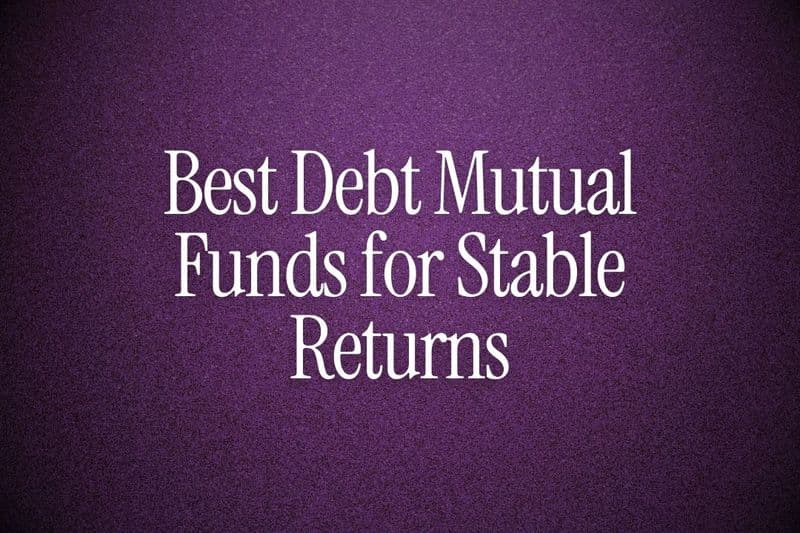
Three weeks ago, Rajesh from Dubai messaged our Belong WhatsApp community. He'd been investing in regular mutual funds through his bank's relationship manager for two years.
Then a friend told him he was "losing 1% every year" by not choosing direct plans.
He asked: "Should I switch? Will I pay tax? And can NRIs even invest in direct plans?"
This confusion is everywhere. At Belong, we've helped hundreds of NRIs navigate this exact question. The truth? Both options are available to you.
But which one makes sense depends on your knowledge, time, and need for guidance.
By the end of this article, you'll understand what direct and regular plans actually are, how much the cost difference really matters, which platforms support NRI investments in direct plans, how to switch (if you decide to), and most importantly-an honest assessment of which path fits your situation.
Let's start with the basics.
Quick Answer: Yes, NRIs Can Invest in Both Direct and Regular Plans
NRIs are allowed to invest in both direct and regular mutual funds in India, subject to the same regulatory framework as resident Indians under FEMA (Foreign Exchange Management Act) and SEBI regulations.
The difference isn't about who can invest-it's about how you invest and what you pay.
Here's the short version:
Plan Type | What It Means | Who It's For |
|---|---|---|
Direct Plan | You invest directly through the AMC's website/app | DIY investors comfortable researching funds |
Regular Plan | You invest through a distributor/advisor who earns commission | Investors who want guidance and portfolio management |
Both plans invest in the same underlying portfolio, managed by the same fund manager, following the same investment strategy. The only difference is cost-and over time, that cost compounds.
What Are Direct Mutual Funds?
Direct mutual funds are schemes where you invest directly with the Asset Management Company (AMC)-HDFC, ICICI Prudential, SBI, Axis, or any other fund house-without involving an intermediary.
You can buy direct plans through:
- The AMC's official website or mobile app
- Platforms like Groww, Kuvera, or ET Money (that offer direct plans)
- RTAs (Registrar and Transfer Agents) like CAMS or KFintech (formerly known as Karvy).
Because there's no distributor or advisor involved, the AMC doesn't pay any commission. This means the fund's operating costs are lower, which translates to a lower expense ratio.
Example:
Let's say you want to invest in HDFC Equity Fund. You go to HDFC Mutual Fund's website, complete your KYC, link your NRE or NRO account, and invest ₹1 lakh. You're now holding units of the direct plan.
👉 Tip: Direct plans are clearly labeled. Look for "Direct" or "Dir" in the fund name. For example: "ICICI Prudential Bluechip Fund - Direct Plan - Growth."
What Are Regular Mutual Funds?
Regular mutual funds are schemes where you invest through an intermediary-a distributor, broker, or financial advisor who holds an AMFI Registration Number (ARN).
These intermediaries:
- Help you choose funds based on your goals
- Handle the paperwork and KYC
- Provide ongoing portfolio reviews
- Assist with redemptions, switches, and tax planning
The AMC pays them a commission (called trail commission or distribution fee) every month based on the value of your holdings. This commission is built into the fund's expense ratio.
Example:
You walk into your bank in Dubai and meet their wealth manager. They recommend three mutual funds based on your risk profile. You invest ₹1 lakh across these funds. You're now holding units of the regular plan.
The wealth manager earns a commission-typically 0.5% to 1% annually-paid by the AMC. You don't pay this directly, but it's deducted from the fund's returns through a higher expense ratio.
Also Read - How NRIs Can Invest in Mutual Funds from Abroad
The Expense Ratio: Where the Real Difference Lies
The expense ratio is the annual fee charged by the AMC to manage your money. It covers fund management, administrative costs, marketing, and (in regular plans) distributor commissions.
This fee is deducted daily from the fund's Net Asset Value (NAV). You don't see it as a separate charge-it's already adjusted in your returns.
How Much Lower Are Direct Plan Expense Ratios?
Direct plans typically have expense ratios that are 0.5% to 1% lower than regular plans. The exact difference varies by fund type and AMC.
Example comparison (as of 2025):
Fund | Direct Plan Expense Ratio | Regular Plan Expense Ratio | Difference |
|---|---|---|---|
0.85% | 1.42% | 0.57% | |
SBI Small Cap Fund | 0.83% | ||
0.20% | 0.29% | 0.09% |
You'll notice that equity funds generally have higher commission differences (0.75% to 1%), while debt funds like liquid or overnight funds have smaller gaps (0.2% to 0.5%).
Why does this matter?
That 0.9% difference doesn't sound huge. But remember-it's deducted every year, and it compounds over time.
NAV: Why Direct Plans Show Higher Numbers
NAV (Net Asset Value) represents the per-unit price of a mutual fund. It's calculated by dividing the fund's total assets by the number of outstanding units.
Because direct plans have lower expense ratios, their NAVs are always higher than regular plans.
Example:
On October 3, 2025:
- ICICI Prudential Bluechip Fund - Direct Plan: ₹87.52
- ICICI Prudential Bluechip Fund - Regular Plan: ₹78.34
Does a higher NAV mean better performance?
No. NAV is just a unit price. What matters is the percentage return.
If you invested ₹1 lakh in both plans on the same day and sold after one year:
- Direct plan might return 12.5%
- Regular plan might return 11.6%
The difference? The 0.9% expense ratio.
Over 10-15 years, this gap widens significantly.
Returns Over Time: The Compounding Effect
Let's run the numbers. Assume you invest ₹10 lakh in an equity mutual fund that delivers a gross return of 12% annually (before expenses).
After 10 years:
Plan Type | Expense Ratio | Net Return | Final Corpus |
|---|---|---|---|
Direct Plan | 0.85% | 11.15% | ₹28.64 lakh |
Regular Plan | 1.75% | 10.25% | ₹26.48 lakh |
Difference: ₹2.16 lakh
After 20 years:
Plan Type | Net Return | Final Corpus |
|---|---|---|
Direct Plan | 11.15% | ₹82.03 lakh |
Regular Plan | 10.25% | ₹70.13 lakh |
Difference: ₹11.90 lakh
Source: Calculation based on CAGR formula
That 0.9% expense ratio difference costs you nearly ₹12 lakh over 20 years on a ₹10 lakh investment. This is the power of compounding-working against you when you pay higher fees.
👉 Tip: Use the Belong app to compare expense ratios across funds. Our FD rates explorer also shows you alternative tax-free investment options in GIFT City.
Can I Just Pick Direct Plans and Save Money?
Not so fast.
Yes, direct plans have lower costs. But they also require you to:
Research and select funds yourself. You need to understand fund categories (large-cap, mid-cap, flexi-cap, debt), compare performance, read scheme documents, and build a diversified portfolio.
Monitor and rebalance regularly. Markets change. Your risk profile changes. You need to review your portfolio every 6-12 months and make switches when needed.
Handle all paperwork. KYC updates, bank changes, redemption requests, tax documentation-you manage everything.
Understand taxation. Capital gains tax for NRIs is complex. TDS rates differ for equity vs debt funds. You need to file ITR and claim DTAA benefits if applicable.
If you're comfortable with all of this, direct plans are better.
If you're not, paying 0.9% for professional guidance might be worth it.
Who Should Choose Direct Mutual Funds?
Direct plans make sense if:
You understand mutual funds. You know what large-cap, mid-cap, debt, and hybrid funds are. You can read a factsheet and understand metrics like Sharpe ratio, standard deviation, and rolling returns.
You have time to research. You're willing to spend a few hours every quarter reviewing performance, reading fund manager commentaries, and tracking portfolio allocation.
You're disciplined. You won't panic-sell during market corrections or chase last year's top performers. You stick to your asset allocation.
You prefer digital platforms. You're comfortable managing investments through apps and websites without human assistance.
Also Read - Types of Mutual Funds
Real example from Belong community:
Priya, a software engineer in London, invests through direct plans. She uses Groww to track her portfolio, reads ET Wealth every month, and rebalances her allocation once a year. She saves nearly ₹40,000 annually in fees on her ₹50 lakh portfolio.
Who Should Choose Regular Mutual Funds?
Regular plans make sense if:
You're new to investing. You don't know where to start, which funds to pick, or how to build a diversified portfolio. An advisor can save you from costly mistakes.
You have complex needs. You're planning for multiple goals-retirement, children's education, property purchase. A financial planner can create a customized strategy.
You value behavioral coaching. AMFI data shows that investors with advisors tend to stick with their investment plans for the long term, avoiding the temptation to exit during market downturns.
You don't have time. You travel frequently, work long hours, or simply prefer to delegate financial management.
Real example from Belong community:
Suresh, a doctor in Dubai, works 60-hour weeks. He invests through his bank's wealth manager who handles everything-fund selection, SIP setup, annual reviews, tax planning. He pays 1% extra but saves 10+ hours every year and avoids emotional investment decisions.
Platform Access: Where Can NRIs Invest in Direct Plans?
Not all platforms support NRI investments in direct mutual funds. Here's what works as of 2025:
Platforms that support NRIs (except US/Canada):
Platform | Direct Plans | NRE/NRO Support | KYC Process |
|---|---|---|---|
Groww | Yes | Yes | Fully online via video KYC |
Kuvera | Yes | Yes | Online, supports NRIs globally |
ET Money | Yes | Yes | Online |
Individual AMC websites | Yes | Yes | Varies by AMC |
Zerodha Coin | Yes | Yes (but limited) | Requires trading account first |
US and Canada NRI restrictions:
Due to FATCA compliance burdens, Zerodha does not allow NRIs from the USA or Canada to invest in mutual funds. Many AMCs restrict or impose additional documentation requirements for US/Canada NRIs.
AMCs that accept US/Canada NRIs (as of 2025)
( Expanded list includes ~20-25 AMCs, e.g.,)
- Nippon India Mutual Fund
- UTI Mutual Fund
- Navi Mutual Fund
- PPFAS Mutual Fund (Parag Parikh)
- SBI Mutual Fund (offline only)
- Aditya Birla Sun Life Mutual Fund,
- ICICI Prudential Mutual Fund,
- Canara Robeco Pramerica Mutual Fund,
- L\&T Mutual Fund,
- Sundaram Mutual Fund,
- TATA Mutual Fund,
- Quant Mutual Fund
If you're from the US or Canada, you'll likely need to:
- Invest offline (physical forms)
- Submit additional FATCA declarations
- Be physically present in India for the first transaction (some AMCs)
Alternative: Consider GIFT City investments through Belong. GIFT City operates as an offshore financial center, simplifying compliance for US/Canada NRIs. Our USD-denominated fixed deposits and funds don't require NRE/NRO accounts and avoid FATCA complexities.
👉 Tip: Before opening an account on any platform, check their NRI policy page. Look for explicit mention of your country of residence.
How NRIs Can Invest in Direct Mutual Funds: Step-by-Step
Here's the actual process:
Step 1: Complete Your KYC
You must be KYC-compliant before investing. This involves:
- Filling out a KYC form
- Submitting passport, PAN card, overseas address proof, and photograph
- Completing In-Person Verification (IPV) via video call
Most platforms now offer fully online KYC for NRIs. Processing takes 7-10 business days.
Step 2: Open an NRE or NRO Account
You cannot invest in Indian mutual funds using foreign currency. You need a rupee-denominated NRE or NRO account.
Which account to use?
- NRE account: If you want to repatriate your investment proceeds back to your country
- NRO account: If you plan to use the money in India (or repatriate subject to limits)
Step 3: Choose Your Platform
Pick from:
- AMC website: Go directly to the fund house (ICICI, HDFC, SBI, etc.). Each AMC has an online investment portal.
- Aggregator platform: Groww, Kuvera, or ET Money let you invest across multiple AMCs from one dashboard.
Step 4: Select Direct Plan Funds
When browsing funds, ensure you select "Direct Plan" (not "Regular Plan"). The fund name will clearly state this.
Use filters to search by:
- Fund category (equity, debt, hybrid)
- Risk level (low, moderate, high)
- Returns (1-year, 3-year, 5-year)
Step 5: Link Your Bank Account
You'll be asked to verify your NRE/NRO account by:
- Entering account details
- Uploading a cancelled cheque or bank statement
- Confirming via penny drop (a small test transaction)
Step 6: Invest
Choose your investment method:
- Lump sum: One-time investment
- SIP (Systematic Investment Plan): Monthly/quarterly auto-debits from your NRE/NRO account
Set up auto-pay mandates for SIPs to avoid manual processing every month.
Also Read - Best SIP Options for NRIs – Step by Step Guide
Step 7: Track and Review
Log in quarterly to:
- Check portfolio performance
- Rebalance if needed (sell overweight funds, buy underweight ones)
- Update goals or risk tolerance
Switching from Regular to Direct Plans: What Happens?
Many NRIs already have investments in regular plans (often started when they were resident Indians). Can you switch to direct plans?
Yes, but there are implications.
Switching from regular to direct plans is treated as a redemption (sale) followed by a fresh purchase. This triggers:
1. Capital Gains Tax
Your gains will be taxed based on:
Equity funds:
Short-term (held \< 1 year): 20% tax
Long-term (held > 1 year): 12.5% tax on gains above ₹1.25 lakh per year
Debt funds:
All gains taxed as per your income tax slab (30% + 4% cess for most NRIs)
2. Exit Load
If you redeem before the exit load period ends (usually 1 year for equity funds), you'll pay a penalty-typically 1%.
3. TDS Deduction
AMCs will deduct TDS at source before crediting redemption proceeds to your NRO account. You can claim excess TDS when filing your ITR.
Should you still switch?
Yes, if:
- You've held the fund for over 1 year (no exit load)
- Your capital gains are minimal or you have other losses to offset
- You plan to stay invested for 10+ years (the cost savings will outweigh the tax hit)
No, if:
- You're close to your investment goal (1-2 years away)
- Your capital gains tax would exceed the potential fee savings
- You value the advisory relationship and portfolio management
👉 Tip: Use a capital gains calculator to estimate the tax impact before switching. Consult a cross-border tax advisor if you're unsure.
How to Identify If You're in Direct or Regular Plan
Not sure which plan you're currently holding? Here's how to check:
Method 1: Check the Fund Name
Look at your account statement or portfolio dashboard. The fund name will include:
- Direct Plan: "ICICI Pru Bluechip Fund - Direct Plan - Growth"
- Regular Plan: "ICICI Pru Bluechip Fund - Regular Plan - Growth" (or no mention of "Direct")
Method 2: Check Your CAS (Consolidated Account Statement)
Download your CAS from CAMS or Karvy. Look for the "Advisor" field:
- If it shows an ARN code (e.g., ARN-12345), you're in a regular plan
- If it says "Direct" or has no ARN code, you're in a direct plan
Method 3: Check Expense Ratio
Go to the AMC's website and download the fund's factsheet. Compare your fund's expense ratio with the published rates for direct and regular plans.
Direct Plans: Advantages and Disadvantages
Let's be balanced about this.
Advantages:
Benefit | Impact |
|---|---|
Lower expense ratio | 0.5% to 1% cost savings annually |
Higher NAV | More wealth accumulation over time |
Higher returns | Compounding benefits of lower fees |
Full control | You decide which funds to buy, when to sell, and how to allocate |
Transparency | No hidden commissions or conflicts of interest |
Disadvantages:
Drawback | Impact |
|---|---|
No advisory support | You're on your own for fund selection and portfolio management |
Requires time and knowledge | Not suitable for beginners or busy professionals |
Risk of emotional decisions | Without a coach, you might panic-sell during crashes |
Complex for tax planning | No advisor to help with capital gains optimization or DTAA claims |
Regular Plans: Advantages and Disadvantages
Advantages:
Benefit | Impact |
|---|---|
Professional guidance | Advisor selects funds based on your goals and risk profile |
Goal-based planning | Customized strategies for retirement, education, property |
Behavioral coaching | Advisor keeps you from making emotional mistakes during volatility |
Ongoing portfolio reviews | Regular rebalancing and fund replacement when needed |
Convenience | Advisor handles all paperwork, KYC updates, and redemptions |
Tax planning | Assistance with capital gains harvesting and TDS optimization |
Disadvantages:
Drawback | Impact |
|---|---|
Higher expense ratio | 0.5% to 1% higher cost annually |
Lower NAV and returns | Fee drag reduces long-term wealth accumulation |
Potential conflicts of interest | Advisor might recommend funds that pay higher commissions |
Dependence on advisor quality | Returns depend on the advisor's competence and ethics |
Can You Mix Both? (Hybrid Approach)
Absolutely. Many NRIs use a hybrid strategy:
- Direct plans for well-researched index funds or simple equity funds (like Nifty 50 or Nifty Next 50)
- Regular plans for complex categories like international funds, sector funds, or debt strategies
Example:
Meera in Dubai invests:
- ₹5 lakh in index funds via direct plans (low-cost, passive investing)
- ₹3 lakh in active equity funds via her advisor (who provides quarterly reviews and tax planning)
She saves on fees where she's confident but gets guidance where she needs it.
What About Switching Between AMCs?
Switching between AMCs (e.g., moving from ICICI to HDFC) is always treated as redemption + fresh purchase-whether you're in direct or regular plans.
This triggers capital gains tax and exit loads (if applicable).
When does switching make sense?
- The new fund has significantly better performance (3%+ higher returns over 3-5 years)
- Your original fund's strategy has changed (fund manager exit, mandate shift)
- You're rebalancing to reduce concentration risk
When should you avoid switching?
- Short-term underperformance (1 bad year doesn't mean the fund is broken)
- You're within the exit load period
- The new fund has similar characteristics (you won't gain much)
Tax Implications: Do Direct and Regular Plans Differ?
No. Tax treatment is identical for direct and regular plans.
Both are taxed based on:
- Fund type (equity vs debt)
- Holding period (short-term vs long-term)
- Your residential status (NRI vs resident)
Equity Funds:
Holding Period | Tax Rate (for NRIs) |
|---|---|
\< 1 year | 20% |
> 1 year | 12.5% on gains above ₹1.25 lakh/year |
Debt Funds:
Holding Period | Tax Rate |
|---|---|
Any | As per income tax slab (30% + surcharge + cess for most NRIs) |
TDS:
AMCs deduct TDS at the time of redemption and credit net proceeds to your NRO account. You can claim refunds when filing ITR if your actual tax liability is lower.
DTAA benefit:
If your country has a Double Taxation Avoidance Agreement with India, you can claim relief. Submit a Tax Residency Certificate (TRC) to reduce TDS rates.
Also Read - Taxation on Mutual Funds
FATCA and US/Canada NRIs: Special Considerations
If you're a US or Canada resident, mutual fund investing comes with extra compliance:
What is FATCA?
The Foreign Account Tax Compliance Act (FATCA) requires financial institutions to report accounts held by US taxpayers to the IRS.
Impact on you:
- Many AMCs don't accept US/Canada NRI investments (to avoid reporting burdens)
- Those that do require additional declarations
- You must report mutual fund holdings on FBAR and FATCA forms when filing US taxes
- Indian mutual funds are treated as PFICs (Passive Foreign Investment Companies) in the US, triggering complex tax calculations
Also Read - Common Mistakes NRIs Make When Investing in Indian Mutual Funds
CRS for Canada and other countries:
The Common Reporting Standard (CRS) applies to residents of 100+ countries including Canada, UK, Australia. Similar reporting requirements exist.
Recommendation:
If you're a US/Canada NRI, consult a cross-border tax advisor before investing in Indian mutual funds. The tax complications might outweigh the benefits.
Alternative: GIFT City investments through Belong simplify compliance and offer tax-free returns for NRIs globally.
Which Should You Choose? Decision Framework
Here's a simple decision tree:
Question 1: Do you understand mutual funds and have time to research?
- Yes → Go to Question 2
- No → Choose regular plans (you need advisory support)
Question 2: Are you comfortable making investment decisions without guidance?
- Yes → Choose direct plans
- No → Choose regular plans
Question 3: Do you have an advisor you trust?
- Yes, and they add value → Stick with regular plans
- Yes, but I only use them for documentation → Switch to direct plans
- No → Choose direct plans and learn as you go
Question 4: What's your investment timeline?
- 10+ years → Direct plans (compounding fee savings matter more)
- \< 5 years → Either is fine (fee difference is smaller over short periods)
What We Recommend at Belong
We believe in transparency. Here's our take:
For new investors or those with complex goals:
Start with regular plans. Work with a SEBI-registered advisor who can guide you through fund selection, risk assessment, and tax planning. Pay the 1% fee for the first 2-3 years while you learn.
For experienced investors:
Move to direct plans. If you understand mutual funds, track your portfolio regularly, and make informed decisions, there's no reason to pay extra fees. The savings compound significantly over 10-20 years.
For US/Canada NRIs:
Consider GIFT City investments as an alternative. GIFT City funds and fixed deposits are simpler from a compliance standpoint, offer tax-free returns, and don't trigger PFIC reporting headaches.
For everyone:
Don't obsess over direct vs regular. What matters more:
- Asset allocation (equity vs debt mix)
- Staying invested during market volatility
- Regular contributions (SIPs)
- Tax optimization (DTAA benefits, capital gains harvesting)
The difference between a good fund and a bad fund is 5-7% annually. The difference between direct and regular is 0.9%. Focus on the bigger picture.
Also Read - What Happens to Mutual Funds If You Return to India (RNOR → Resident)
Final Thoughts
Direct vs regular mutual funds isn't a right-or-wrong question. It's a fit question.
If you're confident in your knowledge, have time to research, and prefer full control-direct plans save you money.
If you value professional guidance, need behavioral coaching, or have complex financial goals-regular plans are worth the fee.
Many successful NRI investors use both. They buy index funds directly and work with advisors for active equity or debt strategies.
The key is knowing why you're choosing one over the other-not just following generic advice.
Still confused? Join our WhatsApp community and ask questions. We have hundreds of NRIs in Dubai, London, Singapore, and the US navigating the same decisions.
Or download the Belong app to explore GIFT City investment options-tax-free fixed deposits and funds that simplify compliance for NRIs globally.
Sources:
- Paytm Money - Direct vs Regular Plans
- Mirae Asset - Direct vs Regular Mutual Funds
- Groww - Direct vs Regular Mutual Funds
- Zerodha - NAV Difference in Direct vs Regular
- ClearTax - Direct vs Regular Plans
- SBNRI - Direct vs Regular for NRIs
- iNRI - Direct vs Regular Mutual Funds
- Zerodha Support - NRI Trading Restrictions
- Groww - USA/Canada NRI Mutual Fund Rules




